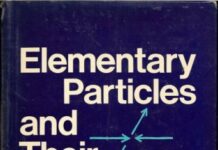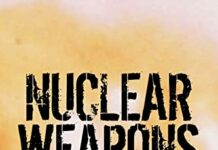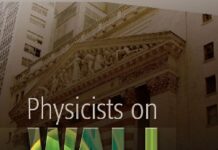
Ebook Info
- Published: 2001
- Number of pages: 427 pages
- Format: PDF
- File Size: 3.49 MB
- Authors: Jeremy Bernstein
Description
From April through December of 1945, ten of Nazi Germany’s greatest nuclear physicists were detained by Allied military and intelligence services in a kind of gilded cage at Farm Hall, an English country manor near Cambridge. The physicists knew the Reich had failed to develop an atomic bomb, and they soon learned, from a BBC radio report on August 6, that the Allies had succeeded in their own efforts to create such a weapon. But what they did not know was that many of their meetings and private conversations were being monitored and recorded by British agents. This book contains the complete collection of transcripts that were made from these secret recordings, providing an unprecedented view of how the German scientists, including two Nobel Laureates, thought and spoke about their roles during the war.
User’s Reviews
Editorial Reviews: Review “[Bernstein’s] angered by [Copenhagen, suggesting] Heisenberg’s attempt to play down his efforts for Hitler . . . may have been what upset Bohr.” — The New York Times, October 20, 2001 by James Glanz(..) Did Heisenberg and the other scientists want to make the bomb? This insightful commentary explains the limitations of their knowledge and the materials available in Germany…. — F. Potter, Choice…a valuable part of the history of the modern world — and indeed, well worthwhile reading for sheer human interest! — Rapport Magazine…an excellent source for understanding the ambitions of Heisenberg’s team and the reason for its ultimate lack of success. — Los Angeles Times Book Review, December 31, 2000A most interesting and important contribution to the modern history of physics. — Michael Eckert, Deutsches Museum, GermanyIt is a fascinating document, revealing not only the limits of the scientists’ wartime knowledge of physics, but their academic fragmentation, and their often lamentable concepts of political responsibility. — Charles Maler, Center for European Studies, Harvard UniversityJeremy Bernstein’s thorough understanding of the physics, and his sharp but fair-minded criticism of Heisenberg’s own approach to the problems involved, makes him an essential guide to the Farm Hall transcripts, and for me illuminated a great many things I had not properly appreciated before. — Michael Frayn, author of Copenhagen[The author] makes the technical discussions understandable to the layman, he compares them to the actual theory of nuclear explosions, he shows where Heisenberg’s understanding is wrong and where it is right. — Hans A. Bethe, Cornell University
Reviews from Amazon users which were colected at the time this book was published on the website:
⭐This fascinating book incorporates the transcripts made from secret 1945 recordings from captured German Nuclear Scientists who worked on fission weapon research during WW II.. These were obtained without the ten scientists knowledge at “Farm Hall,” a British Safe House in an operation similar to what MI 19 used on POW German Generals during the war, see: Helen Fry ‘ s work “The M Room” also available on Amazon.Although the lengthy prologue provides many interesting facts to NAZ I nonaccomplishments in this field during the war, the centerpiece of this work is what happened just after the war’s end and it’s impact on what German physicists did during the war. From translated Top Secret materials in the text it appears fission of the atomic nucleus in uranium was discovered by Hahn & Strassmann in Berlin December 1938. By end of 1941 it was determined this process could produce heat and drive machines. It did not appear feasible by the Germans to create a weapon using the path of modulation of heavy water. Later it was found graphite was a better modulator for reactors. It does not appear a bomb was the goal for no isotopes were created by them.Additionally, it appears the German scientists only had a superficial idea of how a bomb could be made in August of 1945. In order to appreciate this work fully the reader needs a background in general atomic physics obtained in high school coupled with an understanding of western history of the twentieth century.
⭐This book consists of expertly annotated transcripts of conversations of German scientists taken at Farm Hall after the end of the WWII in Europe. The book is based on the recently de-classified “Farm Hall Transcripts”, a revealing set of informative statements which demonstrates the low level of understanding that the German Scientists had of how to build Atomic Bombs. It is written and annotated by an American physicist, so you get some insights as to Heisenberg’s mistakes. The book is a refutation of the book “Heisenberg’s War” by Thomas Powers, a revisionist history that claims that Heisenberg, Germany’s top scientist, really knew how an Atomic Bomb worked, but withheld this information from his colleagues and the German Government.Heisenberg remains a mystery. He won a Nobel Prize in Physics in the early 1930s for his “Uncertainty Principle” which deals with Quantum Mechanics. Yet despite his brilliance, he sounds pretty ignorant at Farm Hall. Was he faking? I think not. To paraphrase Watergate: the question still is “What did Werner Heisenberg know and when did he know it? At Farm Hall, when he found out about Hiroshima, his ego deflated like an untied balloon. His comments were made at a vulnerable and candid moment. They reveal a knowledge one would expect from someone you picked at random at a shopping mall.The Manhattan Project was at least as much engineering as science, and Heisenberg was more of a theologian than a nuts ‘n bolts guy.But hey, don’t take my word for it. If you are really interested, I recommend this book along with “Heisenberg’s War” so you get both sides. Then read “Alsos” by Samuel Goudschmidt, the scientific leader of the famous Alsos Mission, who along with Col. Boris T. Pash (“The Alsos Mission”), followed the allied armies into France and captured Heisenberg and the others. Goudschmidt was a physicist who offered the earliest (1947) and perhaps the most philosophical postmortem on the German A-bomb “program”.
⭐priced well and arrived promptly….I wish the government would give me 20 words to say what I think of Obamacare…I’m one of the 7.1 millions, my policy was canclled, my rate went up 5%, my deductable trippled to $6500, I can only by insurance at certain times of the year, the females covered by the plan are not of child bearing age but can have all the birth control and abortions they want for free, POTUS lied repeatedly about the basic scope of the plan, POTUS is arbitrarily changing the law as passed by congress for political advantage, I expect the premiums to skyrocket next year since not enough healthy people signed up, they paid more to build this website than a new littoral combat ship would cost….follow the money some one is getting a kick back
⭐The one-star is only for the Kindle edition, as a warning.The book itself appears to be excellent. I say “appears” because the editing for the Kindle edition was a disaster. The font can’t be changed, and doesn’t flow — there are hyphens in the text where, presumably, there were hyphens in the printed text. Some of the footnotes in the (otherwise excellent) introduction are simply inserted in the middle of the main text, interrupting a sentence.But at least you can read them. The real problem is that you cannot read ANY of the notes that DON’T interrupt the text. Yes, you read that correctly: The whole point of this edition is that it is annotated by an expert to provide context and help the lay reader. BUT YOU CANNOT READ THE ANNOTATIONS. They aren’t hyperlinked. They aren’t at the end of the chapter. They aren’t at the end of the book. They don’t exist.Unbelievable.If Amazon wants to continue to promote the Kindle, it has to insist on quality control, and that means hiring professionals to do the editing. Not whatever untended machine performed this abortion._________________After posting the review above, I noticed an earlier review pointing out the same problem. In 2009! Apparently not a problem for Amazon. Well, I guess the joke’s on me. Caveat emptor.
⭐This book is about the history of the German effort to develop an atomic bomb. It shows how the Germans were on the wrong track and how their management was very poor. It also shows how far hehind they were in the field of physics technology. For instance they did not have a single cyclotron. What they needed was a person like general Groves who was able to get all the necessary funding for the effort, and assemble a great team of scientists.
⭐This volume fills an historical gap, as such it is probably a required read for those interested in the pre-war and WW2 era nuclear weapon development. There are a number of surprises here, well to me anyway, that made it fascinating, although the structure of the volume is slightly awkward, recorded text in one column with extensive note and comments by the author in another. It is hard to see an alternative format, and the notes are useful, but it does make reading disruptive – you see a superscript and automatically go to the appropriate note – this means you lose the rhythm of the conversations somewhat.Read no more if you want the ‘excitement’.OK we all know that the German’s did not develop a nuclear weapon, and let’s be grateful for that, however what is surprising is how far they were away. The Manhattan project was both vast and organised, the German effort was neither. Another thing of note is perhaps how little the scientists ‘imprisoned’ at Farm Hall knew about possible weapon design. This is not to say that the likes of Heisenberg and Hahn for heaven’s sake were not able to understand this, they simply hadn’t been through the co-operate thought processes of those involved in the Manhattan project.Despite the fact that we know ‘whodunnit’ and ‘whodidn’tdunnit’ give this a go if this topic interest you.
⭐The talks between German nuclear physicists while in Ely are interesting, so is the award of Nobel Prize to Hahn after US dropped atom bombs on Hiroshima and Nagasaki.I do not agree with the the author’s conclusion about German physicists’ resistance to make an atom bomb for Hitler. From the comments of the 10 physicists printed in this book and detailed discussion of the matter by Thomas Powers in Heisenberg’s War, it is clear that majority of these scientists did not want to make a bomb for Hitler. Like all other nuclear physicists in the western world they were excited to work on fission, something new and powerful, but they were hesitant to hand over such a horrible killer machine to Hitler.
⭐Il libro contiene la registrazione segreta dei colloqui intercorsi tra alcuni scienziati tedeschi di fama mondiale catturati a guerra finita e internati a Farm Hall presso Oxford. Erano presenti tra gli altri Otto Hahn e Werner Heisenberg. E’ interessante rilevare che le conoscenze di Heisenberg in materia di fisica nucleare erano insufficienti per costruire una bomba a fissione. Per esempio non conosceva il valore della massa critica di 235U e 239Pu.
⭐
⭐molto interessante, lo cercavo da tempo mi pare che sostenga abbastanza bene la tesi dell’autore, cioè che gli scienziati tedeschi non hanno rallentato il programma nuclerare tedesco se non involontariamente.
⭐
⭐この本は、Heisenbergらが連合軍によって英国のFarm Hallに軟禁されたときの盗聴記録です。本文は基本的に英語で欄外に英語の注釈がついています。独英の対訳ではありません。ドイツ語の資料の部分はわずかです。1992年に最初に発表され、1993年に出版されました。 自分たちの知識や能力をアメリカがほしがっていると自信を持っていた彼らは、原爆投下を聞いて意気消沈します。U235をどのように濃縮したのだろうと疑問を持ったり、核爆発に必要なU235の量を過大評価していたことや、中性子反射板を使えば臨界量を少なくできると悟るなど、Heisenbergらの分析不十分さが明瞭にわかります。 しかし、最も印象的なのは、ナチス下で原爆開発にあたった彼らの自己正当化です。原爆ができなかった⇒意図的に作ろうとしなかった/ナチに対してサボタージュしたのだ、と醜悪にも言い替えをします。彼らは、核分裂の第1発見者はMeitnerではなくHahnであるという文書を連名で書いています。(p148)読んでいて、不誠実さに吐き気を感ずるほどです。 物理学者としてはともかく、一人の人間としてみるとHeisenberg、Hahn、Weizsäckerらは一般人となんら変わらない弱さと醜さもっています。ノーベル賞級の専門家であっても神格化してはならないと思います。 英語の会話文なので、読むのに困難はありませんが、邦訳されて多くの人に読んでいただきたいと思います。追記●Heisenbergは、師Bohrに会いに行って「ヨーロッパはナチス支配をうけいれなければならい」旨を話して、Bohrを激怒させました。(「ヒトラーと物理学者たち――科学が国家に仕えるとき」、フィリップ・ボール、岩波書店)●「なぜ、ナチスは原爆製造に失敗したか―連合国が最も恐れた男・天才ハイゼンベルクの闘い」 (福武文庫)では、Heisenbergびいきが目に余ります。 あまりに事実と相違するため現在欧米ではフィクションとされているという。●よく知られた事実だが、ナチス戦争犯罪者である科学技術者をアメリカが大量に招へいし、軍事機密を収集し研究させた。典型例はvon Braun。「ナチ科学者を獲得せよ!」アニー・ジェイコブセン 太田出版●日本の731部隊のおぞましい研究者も戦争犯罪人として訴追されなかったのも、米軍へ研究成果を提供したからであった。「731免責の系譜―細菌戦部隊と秘蔵のファイル」 太田昌克「標的・イシイ 731部隊と米軍諜報活動」 常石敬一 編訳 (NARAアメリカ合衆国公文書館機密指定解除文書)
⭐
Keywords
Free Download Hitler’s Uranium Club: The Secret Recordings at Farm Hall in PDF format
Hitler’s Uranium Club: The Secret Recordings at Farm Hall PDF Free Download
Download Hitler’s Uranium Club: The Secret Recordings at Farm Hall 2001 PDF Free
Hitler’s Uranium Club: The Secret Recordings at Farm Hall 2001 PDF Free Download
Download Hitler’s Uranium Club: The Secret Recordings at Farm Hall PDF
Free Download Ebook Hitler’s Uranium Club: The Secret Recordings at Farm Hall


